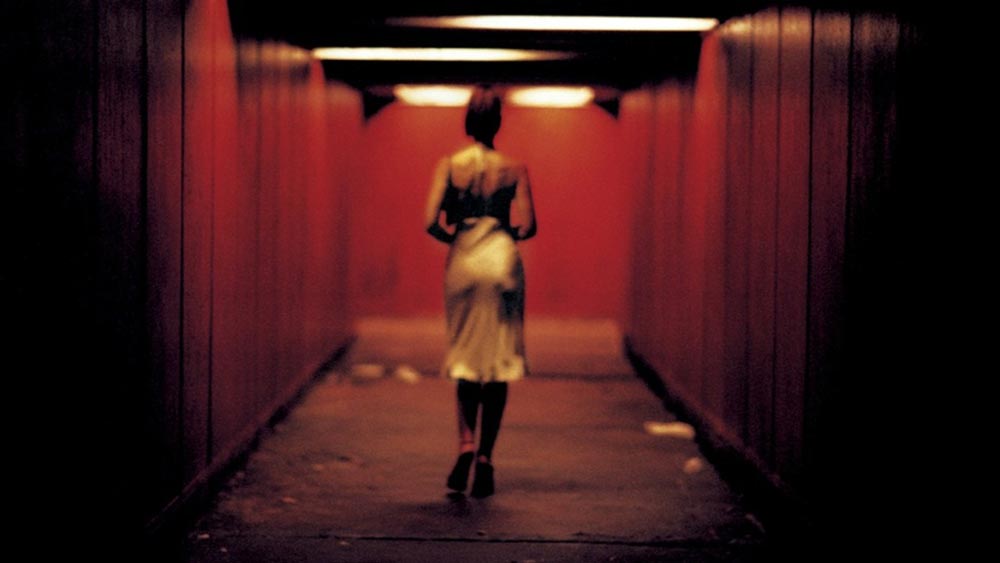Last month, a new edit of Gaspar Noé’s 2002 cinema du corps, Cannes walk-out-a-thon Irreversible closed the Brooklyn Horror Film Festival. Simply put, Irreversible: Straight Cut flips the script of the original, reverse-chronological version and places the events of the film in sequential order.
In the intro, guest host Eric Thirteen asked for a show of hands, of how many in the audience hadn’t seen the 2002 cut. A few people raised shaky arms, but most kept theirs tightly folded in their laps. A better question might have been for the nervous majority: why endure Irreversible for a second time—backwards or forwards?
Irreversible is a difficult watch for more than one reason. Its chaotic opening—replete with swirling camera-work, a nausea-inducing soundtrack, and a scene of jaw-dropping violence—leaves us reeling to make sense of the hellish universe we’ve been plunged into. Then there are the abrupt jumps back in time. Each sequence ends jarringly, with the beginning of one that’s taken place immediately prior. Even before we reach the film’s centerpiece—a nine-minute rape scene that’s as upsetting as any that has ever been committed to film—we’re shaken and confused. Once the violence begins to de-escalate, we remain in a state of self-preservational shock.
Whereas the original Irreversible essentially prevents us from feeling empathy for its three main characters, Straight Cut all but demands that we do. It begins with a scene of sexy, domestic bliss between Alex and Marcus (Monica Belluci and Vincent Cassel, then a real-life couple). We’re endeared to their relationship before we meet erstwhile flame Pierre (Albert Dupontel). Marcus acts like a cheating buffoon at a party the three attend, but on the flip side, Pierre is also badgeringly persistent toward Alex. We understand why she decides to leave alone, even if we know what will happen to her next.
Because of Irreversible’s original structure, we’re constantly confronted with the consequences of misguided decisions. This places the viewer in an unforgiving position of power that’s a slippery slope to judgment. As Alex leaves the party solo, we say to ourselves “She shouldn’t be doing this.” When a woman on the street tells her to take the subway instead of a cab “because it’s safer,” we don’t see it as helpful advice—we wonder who this woman is, and why the hell she’d say that.
Noé’s thesis—that time destroys everything—is more resonant in Straight Cut. We blame the tragic hand of fate rather than the judgment of characters whose lives become shattered by strangers who seized upon their vulnerability. This approach is instructive in its real-world implications.
When Alex is wheeled into an ambulance after her attack, unconscious and bloodied beyond recognition, she’s no longer Alex. This means something in Straight Cut. But in the original cut, this scene is her first on screen. She’s as anonymous as any archetypal “dead girl” or rape victim from television or movies or folklore—or crime reporting. In the real world, we meet victims of violence after the fact. It takes effort to separate them from the violence that has thrust them into headlines.
Straight Cut does the work for us. In characteristically unsentimental form, Noe has said that he recut the original version “Because it was possible!” But by showing how he could have presented Irreversible’s timeline linearly—as he might have done, if he hadn’t found it necessary to capitalize on the success of Memento (2000)—Noé also, if inadvertently, comes clean about how cruelly he treated his characters and his audience 20 years ago. We’re invited to self-reflect too, should we elect to relive Irreversible. The revisitation of trauma, via Straight Cut, is a necessary, redemptive exercise.
Irreversible: Straight Cut screened last month at Brooklyn Horror Festival on the occasion of the film’s 20th anniversary.
“Scene Report” is a new series in which Screen Slate contributors consider a recent cinematic event in retrospect.



